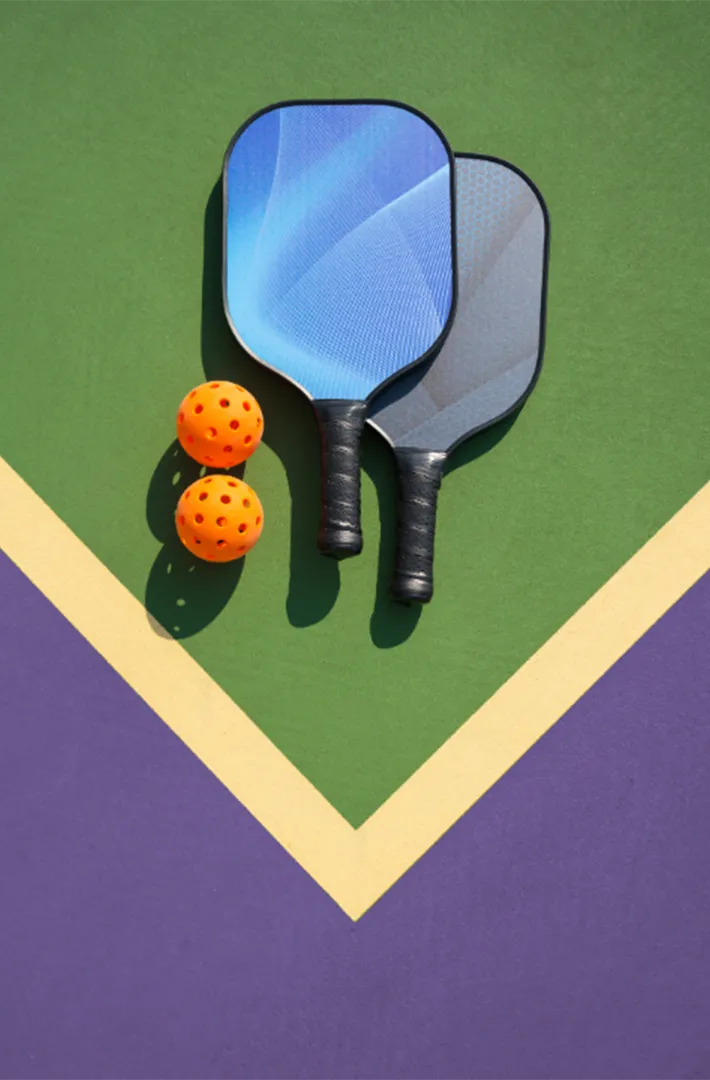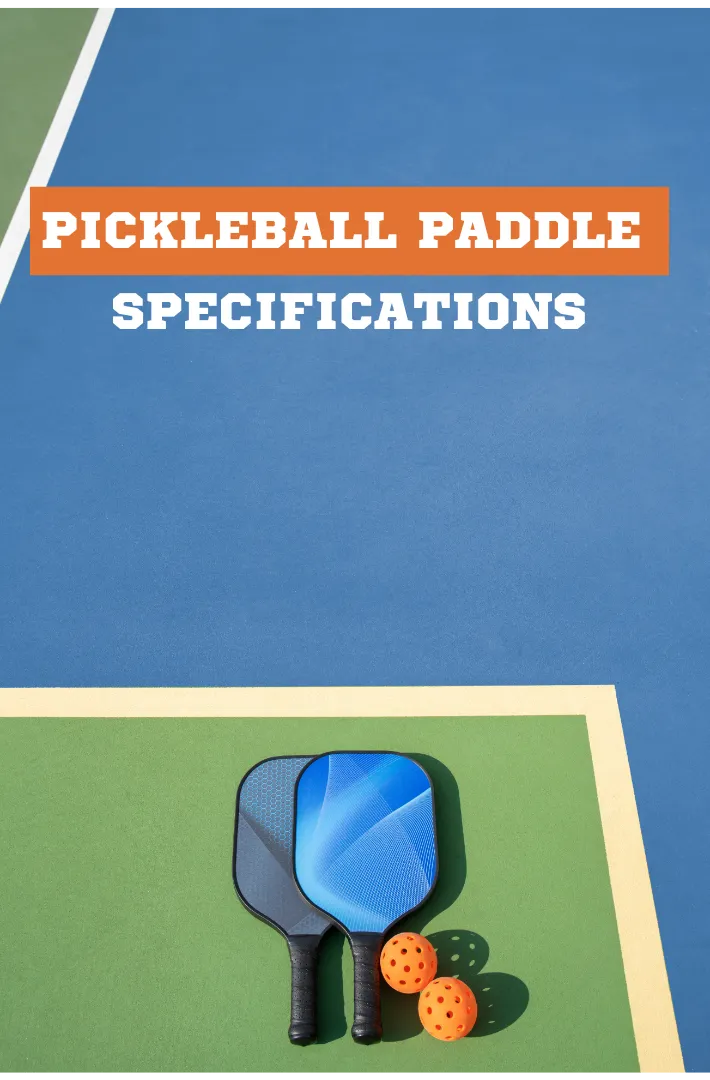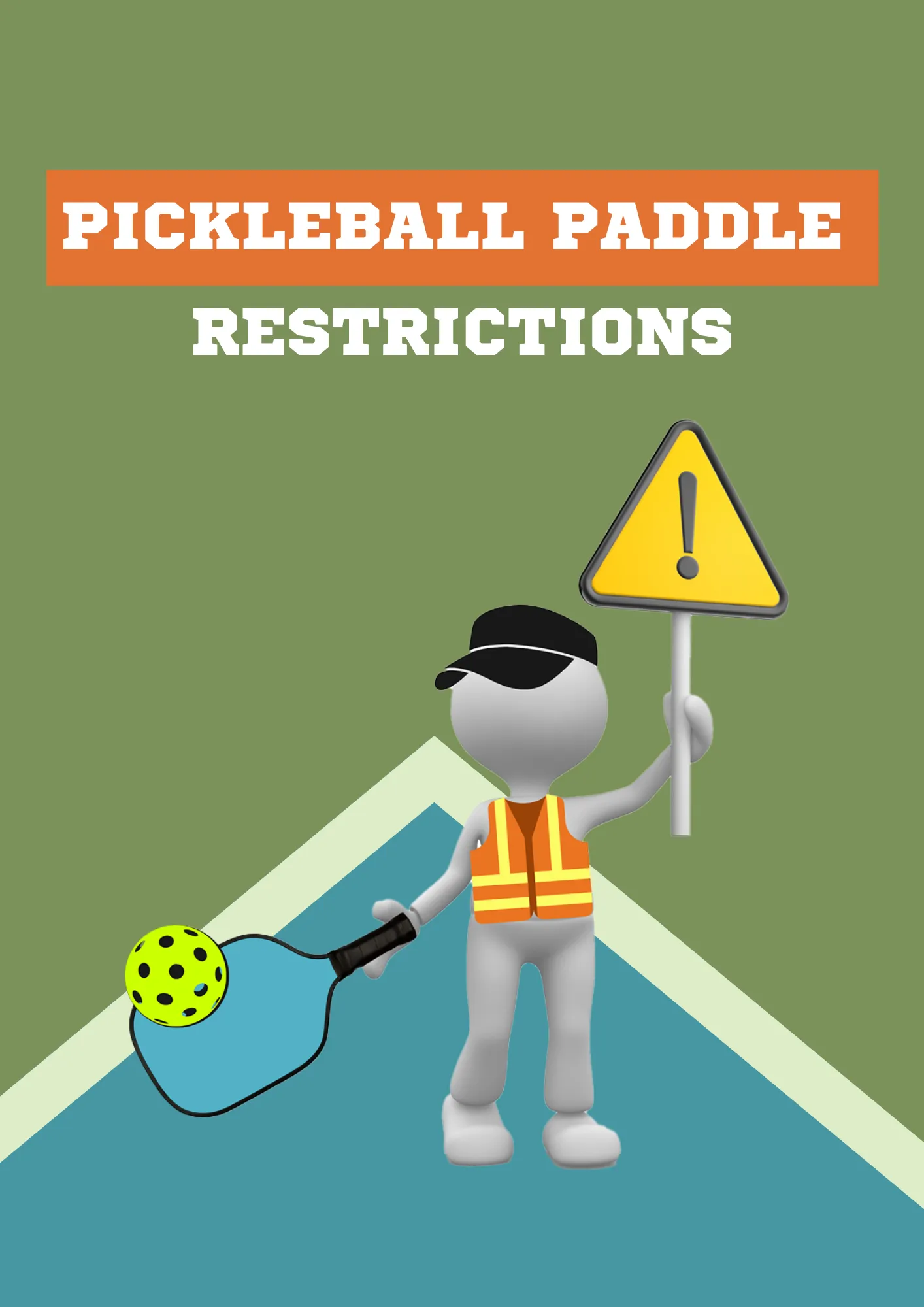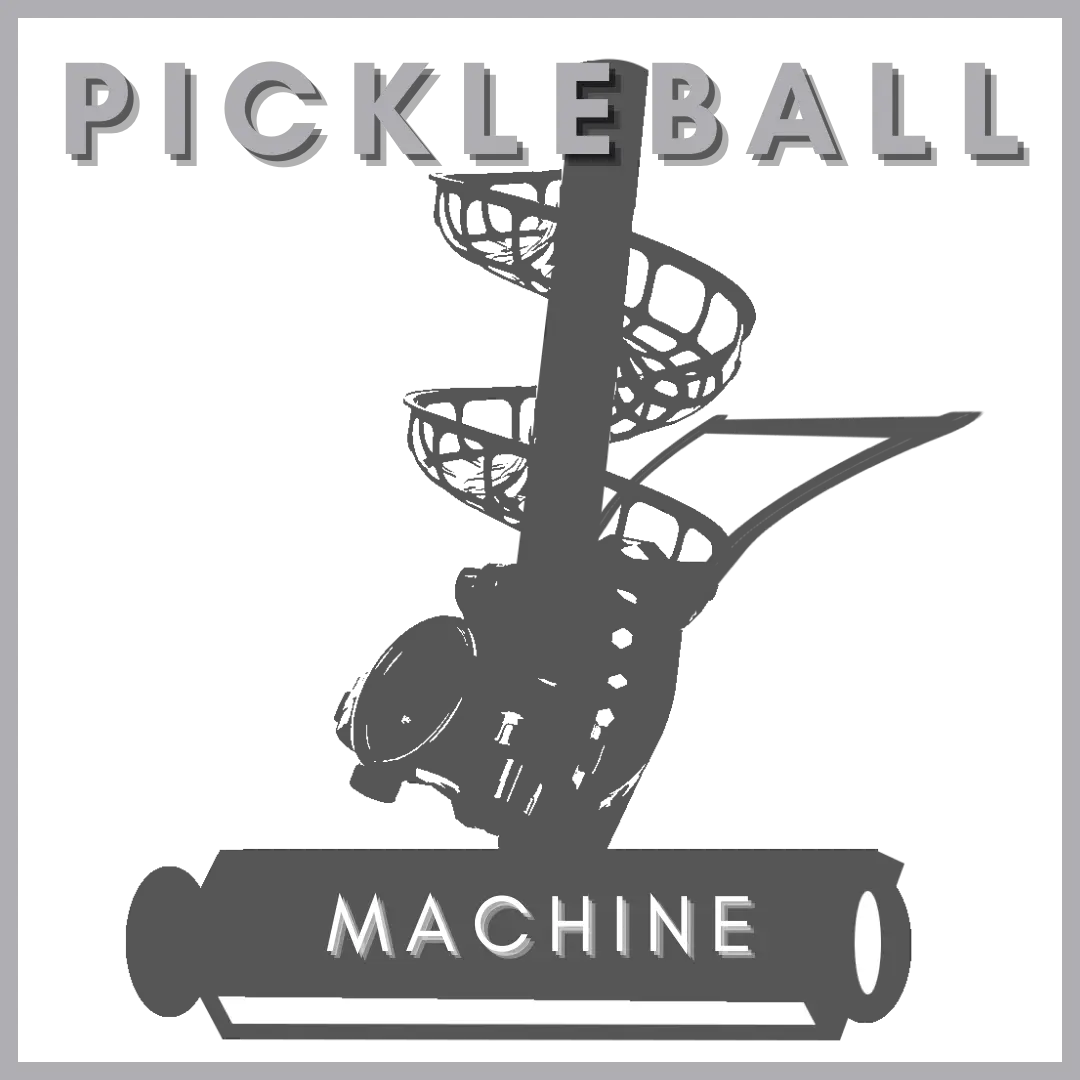
Pickleball Techniques and Strategies: from Beginner to Champion
From Beginner to Pro: Ace your Play with our Pickleball Techniques & Strategies to Dominate the Court in your Next Game.
Pickleball Paddle serves as the primary tool for hitting the ball in the sport of Pickleball. It is a racket made of solid wood or carbon fiber with a handle and a flat surface.
In addition, recreational players tend to prefer wooden paddles due to their affordability and softer feel, while more competitive players often choose composite and carbon fiber paddles for improved power and control.
Pickleball paddles are available in different weights, grip sizes, and shapes, which allow players to select the paddle that best aligns with their needs. Some paddles are lighter and allow players to move around with quicker reactions, while others offer maximum power. The size and material of the grip not only make it more comfortable but also help prevent slipping during high-speed action.
While playing Pickleball, players hold the grip by its handle and use the hitting surface to strike the ball.
Pickleball paddles set themselves apart from tennis or table tennis paddles, as they are specifically crafted for the unique dynamics of the Pickleball game.

 1. Material – Pickleball paddles are made of 3 main materials: wood, composite, and carbon fiber, to ensure they meet the standard material Approved by the USA Pickleball.
1. Material – Pickleball paddles are made of 3 main materials: wood, composite, and carbon fiber, to ensure they meet the standard material Approved by the USA Pickleball.
2. Surface Roughness – In order to meet the required standards, the hitting surface must remain smooth and free from any holes and rough texture so as to avoid excessive ball spin.
3. Grip Size – The grip size of a Pickleball paddle refers to the handle’s distance. Simultaneously, the length and width, including the edge guard and butt cap, must not exceed 24 inches (60.96 cm). Similarly, the paddle length must not exceed 17 inches (43.18 cm). However, there are no rules on the thickness of the paddle. Nevertheless, it is up to the player to decide how thick they want their paddle to be.
4. Weight – Although there are no weight restrictions in Pickleball paddles, lighter paddles are easier to move around for quicker reactions, while heavier paddles are more balanced and powerful. Therefore, the most suitable weight for a paddle depends on the playing style and personal preference of each player.
 1. Surface and Mechanical Features: Certain surface features and mechanical components can not be used in paddle construction. These include anti-skid paint, textured paint with sand, rubber, or vinyl compounds, as well as any material that enhances spin. It is against the rules to use rubber, synthetic rubber, and sandpaper-like characteristics. Equally, the use of removable parts is subject to strict prohibition. Another key point is that paddles must not include moving parts that could increase head momentum and force. Although, this excludes paddle grip adjustments, grip wraps, and lead tape on the paddle edge. Ultimately, Players must refrain from employing any form of electrical, electronic, or mechanical assistance during gameplay.
1. Surface and Mechanical Features: Certain surface features and mechanical components can not be used in paddle construction. These include anti-skid paint, textured paint with sand, rubber, or vinyl compounds, as well as any material that enhances spin. It is against the rules to use rubber, synthetic rubber, and sandpaper-like characteristics. Equally, the use of removable parts is subject to strict prohibition. Another key point is that paddles must not include moving parts that could increase head momentum and force. Although, this excludes paddle grip adjustments, grip wraps, and lead tape on the paddle edge. Ultimately, Players must refrain from employing any form of electrical, electronic, or mechanical assistance during gameplay.
2. Alterations – Only specific modifications are allowed to a paddle, such as adding edge guard tape, lead tape, changing grip size or wrap, decals, and identification marks. Keep decals and tape within a maximum height of 1.0 inches (2.54 cm) above the grip and do not extend them beyond 0.5 inches (1.27 cm). Likewise, the edge guard should stay within 0.5 inches. However, paddles manufactured for sale should not have additional graphics or designs except for “handwritten” pen marks. On the other hand, Players are free to write on the surface of the paddle as long as it doesn’t affect the texture and remains appropriate. Nevertheless, it is important to note that altered paddles must still meet all required requirements.
3. Model Designation – To comply with regulations, paddle manufacturers must not only mark their brand but also include the ‘USA Pickleball Competition’ seal. In cases where paddles have different core materials or notable dissimilarities, it is equally important to assign a different name or number.
Remember that the right paddle for you may depend on a combination of these factors. Before making a purchase, it is advisable to test different paddles to find the one that feels most comfortable and suits your playing style.

From Beginner to Pro: Ace your Play with our Pickleball Techniques & Strategies to Dominate the Court in your Next Game.

Step into the spotlight, make a lasting impression, and become a trendsetter on the Pickleball court with our Pickleball apparel guide.

Thinking about the perfect gift for someone just starting in Pickleball? Discover our Pickleball gift guide tailored for beginners. Look no further.

Ever wondered how your Pickleball style could reach new heights? Learn the secrets of success with the “Pickleball Accessories To Enhance Your Play and Ace Your Style”.

Are you seeking the perfect Pickleball balls for 2024? Let’s find out why they’re the “Best Pickleball balls for 2024”.

Looking to boost your pickleball skills? How can Pickleball Machines serve as your secret weapon?
Would you like us to feature your brand in our upcoming blog post?